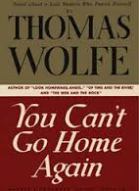Chuck Palahniuk
Did you know that Chuck Palahniuk’s Fight Club (the book not the film) was published 19 years ago this month? I inadvertently discovered this whilst online yesterday. I am marking the anniversary of the release of Fight Club by dedicating this week’s blog post to Chuck Palahniuk’s books.
I have read and reviewed 7 of this iconic transgressive author’s works. The following books are presented in the order in which they were published.
The book’s narrator becomes friends with an anarchist by the name of Tyler Durden. The duo form a fight club, which meets every Sunday in basements and car lots.
My Review: The protagonist, who remains nameless, is an insomniac leading a bland corporate existence, investigating accidents for a car company, whose only concern is profit. (More)
My Rating: Excellent
An accident leaves a model horribly disfigured and incapable of coherent speech. Whilst in hospital she meets Brandy Alexander. Their ensuing cross-country trip concludes with a surprising revelation.
My Review: Shannon McFarland is a catwalk model, who is the centre of attention wherever she goes. That is until she ‘accidentally’ blasts her jaw shot off with a gun … (More)
My Rating: Average
Choke is in essence a social commentary about our innate craving for attention. Protagonist Victor is a victim of the selfish motivations at the very root of modern American society.
My Review: The protagonist, Victor Mancini, is a sex addict employed at an eighteenth-century historical re-enactment park. Victor attends various sexual addiction support groups, where he meets … (More)
My Rating: Average
In this harrowing and provocative set of short stories, Palahniuk skilfully explores a variety of themes, in addition to dispensing intelligent commentary on the human psyche.
My Review: Haunted is about a group of writers, who have been assembled by the conniving Mr Whittier to attend a writers group. The location of the retreat …(More)
My Rating: Good/Disturbing
Rant challenges our own traditions by demonstrating how we contort our recollection of events in accordance with our desires, motives and beliefs. There are obvious parallels with the gospels.
My Review: Rant is the oral history of Buster ‘Rant’ Casey, recounted by an array of people including his relations, friends, enemies and lovers. Rant’s childhood companions from … (More)
My Rating: Quite good but convoluted
Damned is a satire of hell. Written in a lighthearted style, the book is punctuated with comical details, pop-culture references and Theological irony. Palahniuk’s vivid imagination is on display throughout.
My Review: The protagonist is thirteen-year-old Madison, the daughter of wealthy alternative parents. The privileged Madison studies at an exclusive Swiss boarding school and spends her holidays alternating … (More)
My Rating: Good
After escaping from Hell Madison Spencer (protagonist of Damned) is forced to spend a year languishing on Earth as a ghost. In her absence Madison has spawned a religion, Boorism.
My Review: Doomed is the sequel to Damned and part two of a proposed Dante inspired trilogy. It sees the return of Damned’s protagonist – the plucky, post-life, plump, periphrastic, … (More)
My Rating: Bad



































































